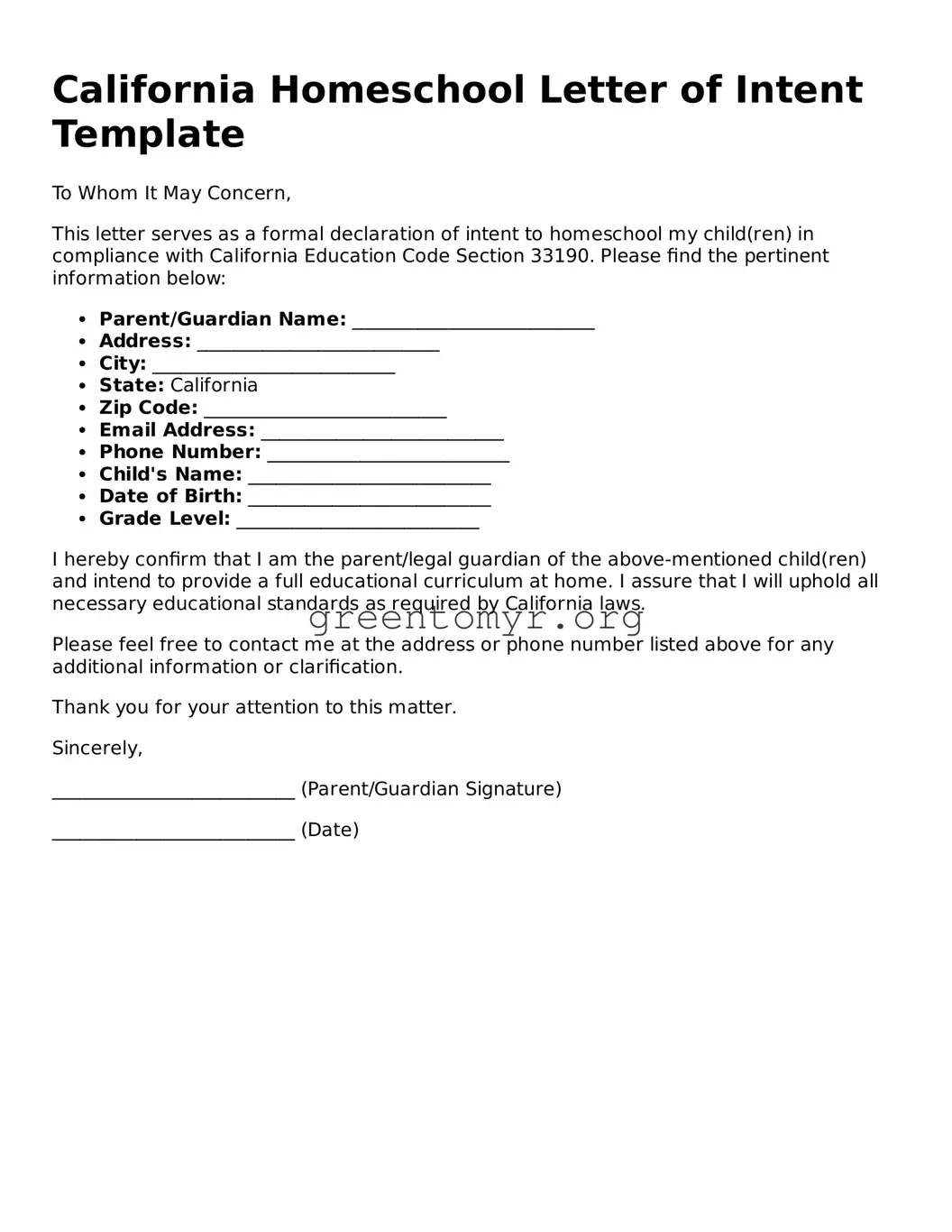Filling out the California Homeschool Letter of Intent form can seem straightforward, but many individuals encounter pitfalls in the process. One common mistake is neglecting to include all required information. Fields such as the student's name, birthdate, and address must be provided clearly and accurately. Missing any of these details can lead to delays or even rejection of the application.
Another frequent error is incorrect or inconsistent information. For instance, having a discrepancy between the name on the form and the name on the student’s official documents can raise red flags. Ensuring that names match exactly as they appear on the birth certificate can help avoid confusion.
Some individuals submit the form without thoroughly reviewing it. Proofreading can catch simple typographical errors that might lead to misunderstanding. A rushed submission might overlook such details, which can create complications later.
Completing the form without proper signatures is another issue. Both parents or guardians may be required to sign the document, depending on the family structure. Omitting a signature can render the application incomplete.
Another mistake involves not adhering to the submission timelines. California law requires that the Letter of Intent be filed within a specific period each school year. Late submissions can result in complications with compliance and potential legal consequences.
Choosing not to include the necessary attachment, if applicable, creates further complications. Some families may need to include additional documentation or forms, particularly if they are filing as part of a larger homeschooling group or organization. Failing to provide these could result in delays.
It's not uncommon for families to forget to keep a copy of the submitted form. Retaining a copy helps in future communications with school districts and serves as proof of compliance. Without this record, tracking correspondence can be challenging.
Offering incomplete or vague educational plans is another prevalent mistake. The form typically requests a brief outline of the intended curriculum or educational approach. Providing too little detail may be viewed unfavorably by authorities.
Lastly, some individuals may hesitate to ask for help when needed. Filling out forms can be confusing, and relying on resources, whether from local homeschooling organizations or legal aid, can provide valuable guidance. Seeking assistance ensures everyone is correctly informed about what needs to be included in the form.
